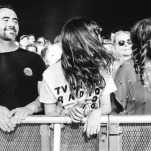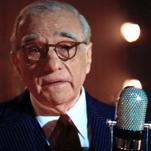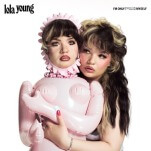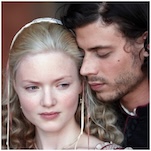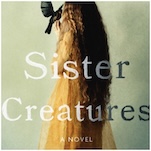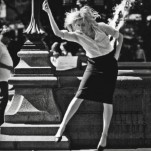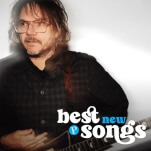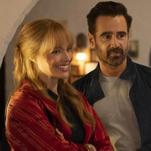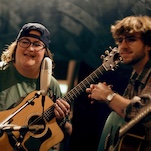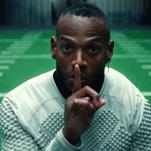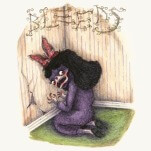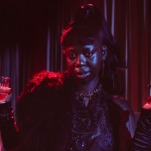Color Theory: Barbarian’s Doorways of Hell
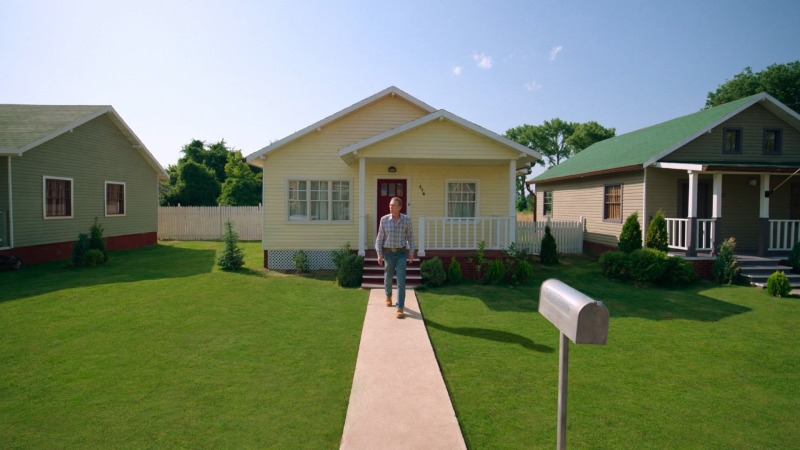
Color Theory is a Paste column that examines and critiques the literal and symbolic use of every hue under the sun, within the works of some of cinema’s greatest auteur filmmakers. You can see every entry in the series here.
When Zach Cregger waltzed onto the horror stage with Barbarian in 2022, no one expected the writer-director behind the breakout to be, well, already broken out. The thing is, he had exploded under a different genre, discipline, time period, and name altogether: acting in comedy sketches at the end of the aughts as the co-creator of the pre-viral internet sensation The Whitest Kids U’ Know. As turns go, Cregger’s twist toward heady, carnal horror-mystery has been a sharp one – a rebirth for an artist once best known for facetiously carrying a gallon of PCP around in public.
As if transitioning from a sketch comedy do-it-all (he often wrote, starred, produced, and directed alongside his co-creators) to a full-fledged horror auteur isn’t enough, Cregger continues to expand the horizons of his creative disciplines. He collected his first composer credit for the upcoming Weapons (already receiving strong reviews), his fourth feature overall yet only the second film in this fresh studio horror phase of his directorial life, which began over a decade after he shelved his potential comedy directing career post-Miss March and The Civil War on Drugs.
Barbarian, like its insightful color, plays on misdirection and implication, the illusion of and allusion to what lies beneath. Who is the barbarian? Where is the barbarian? Is it Keith? Is it the man shouting, “Little girl!” outside? Is it The Mother? AJ? Frank? On the heels of Weapons, we take a closer look at the ways Cregger and his crew employ color to distinguish and flesh out the many layers, hidden or otherwise, of Barbarian’s inferno.
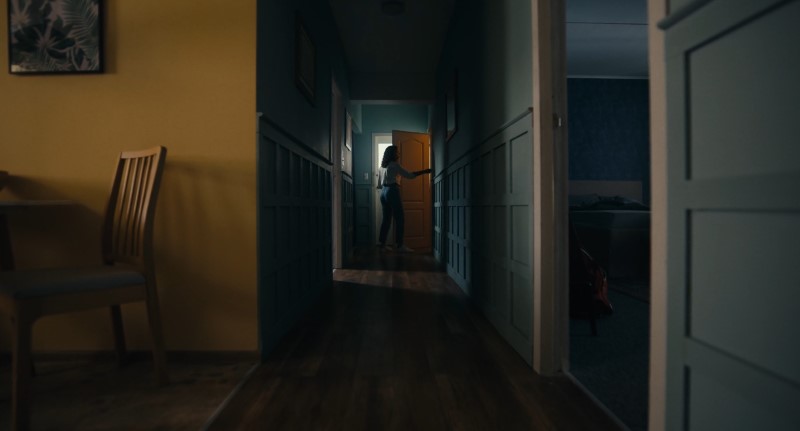
Much like Dante’s Divine Comedy pieces hell together through a puzzle of concentric circles, Cregger’s Barbarian jigsaws its dungeon hell together through doorframes. But instead of journeying down a cone of increasing punishment, stopping off at each level, we’re riding a train of confounding horror inching into the darkness, making pit stops at haunting hot pink “nurseries” and battery acid “bedrooms” that render the terrifying unknown of the fixed track ahead more attractive.
Between the bedroom, bathroom, laundry room, back door, and basement, there are five doorframes in the shot. The kitchen occupies a similar function in the frame in its distinction from the hallway, a la the other rooms. Each plane in the shot’s topographic matrix of color is a harmonizing piece of the palette, even the chair cushion. The complexity of the tetradic color scheme (four colors, balanced in two complementary pairs – in this case, blue-green with red-orange and blue-violet with yellow-orange) is a strong representation of the many interwoven layers and lairs of Barbarian.
The prominent teal walls slicing through the center of the frame are made up of various bright and gloomy hues that set the foundation of the frame’s color and mood. The matching river of bamboo and mahogany wood colors below is the dirt path Tess will soon find herself on underground (with a manicured sheen on the surface). A melancholic cornflower blue flanks the right and a golden sunflower yellow the left. Shoulder-loosening daylight seeps in from the bathroom and blown-out backdoor window, which looks like an elysian escape of light in comparison to the eerie burnt orange menace of the basement door, where Tess begins her descent. She hovers between the two, unaware of how consequential the need for more toilet paper will be.
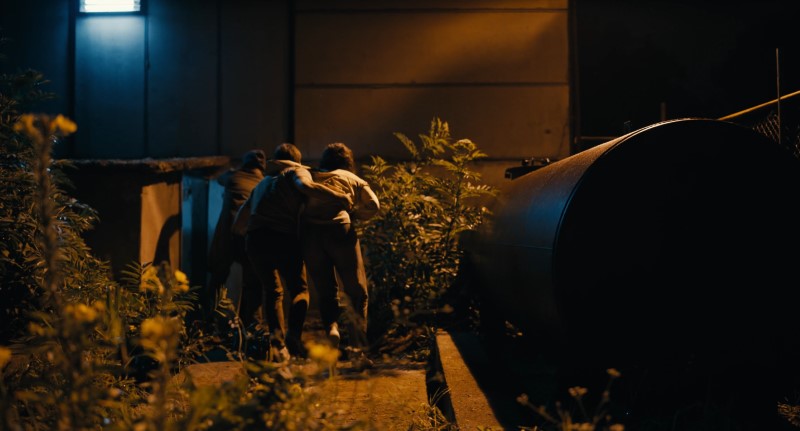
In Barbarian, color carries the same meaning from frame to frame less often than it serves to create contrast within the frame. With every new character, twist, and turn, Cregger either ascends to brighter places or descends into darker terrors. And the color follows suit, painting each detour with a shade or palette that differentiates it from the levels and rooms surrounding it in the barbarian’s maze. As a result, we often end up with simple but effective complementary color schemes, defined by the prominence of two colors in the frame that sit opposite each other on the color wheel and create the greatest contrast in color, making the scheme perfect for designating different floors, rooms, danger zones, and “safety” zones within the frame, as we can see here.
The persimmon floodlight hangs over the right side and foreground of the frame, from whence the fleeing party came, like a harbinger of The Mother’s imminent arrival, taking over the greens, yellows, greys, and blacks of what it touches. Meanwhile, arctic blue light hangs sparsely over the left side and background of the frame, clearly marking the doorway to the safehouse they’re scrambling to, paling in comparison to the fire of the street light beating down on them.
The complementary dichotomy between yellow-orange-red and violet-blue-green is a constant in DP Zach Kuperstein’s compositions and the film’s thematics, especially on the ground floor of Barbarian’s doorframe factory: the interior paint job of the house, mimicked by the stock simple cubist painting in the living room; the canary yellow exterior of the house up against the metallic millennium blue SUV Tess drives and the synthetic cerulean of the tarps covering abandoned neighboring houses; the lights of Brightmoor at night; Andre’s not-so-hidden hideout below the water tower; the cobalt blue- and international orange-pillared parking garage AJ picks up his rental car in; the silvery sheen of the Pacific cut off by the shrubby cliffs of the PCH seen below.
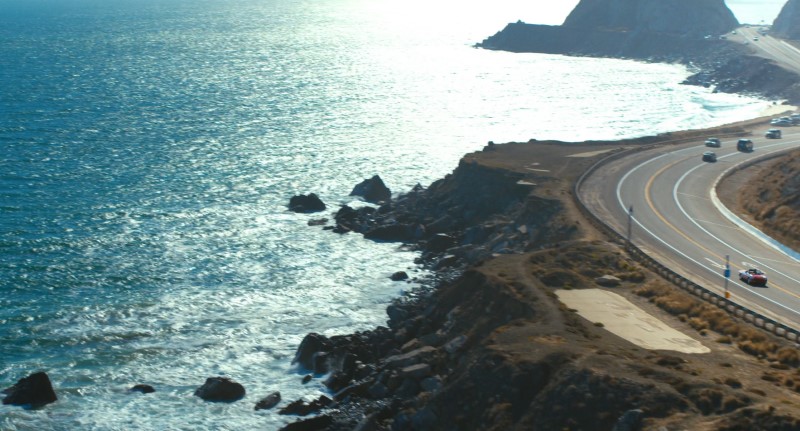
In the most unexpected cut of the movie – mid-screech, after The Mother nurtures Keith’s head into a pulp – we jump from the swarming abyss of the tunnels to this sunny day Los Angeles scene, set to the only thing less hip than Donovan’s “Riki Tiki Tavi” in the 21st century: a guy like AJ singing Donovan’s “Riki Tiki Tavi.” The frame is composed of blue-green and yellow-orange again, but the tones are natural, bright, and rough, a severe departure from the complementary shades of Brightmoor.
The colors neutral out in the middle, where land and sea meet, contrary to the way they flare out at the edges in the glistening azure of the ocean and the charming mustard of the highway strip. In the bottom right corner, AJ’s candy apple car rips down the highway like it can’t be touched. The color of blood, shame, error, and Satan himself, red is AJ’s theme song in pigment form.
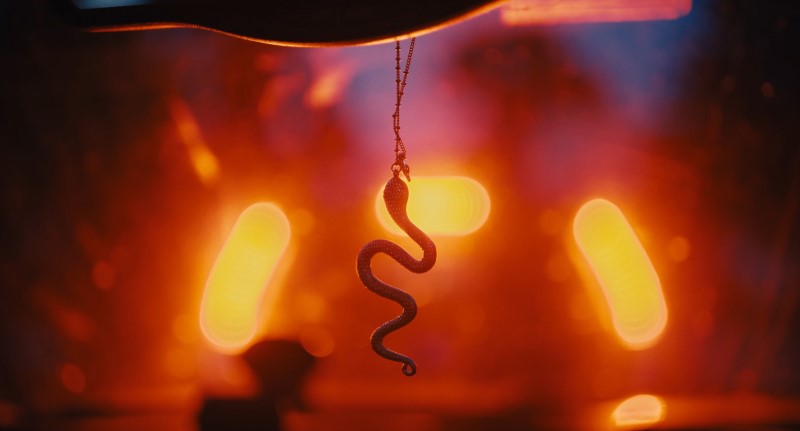
The same complementary color dichotomy takes over the frame when he arrives in Michigan, the blazing ruby heat of his brake lights burning around the neon tangelo plastic that covers them, creating a sinister silhouette out of the silver snake hanging in Tess’s window. Black and indigo marbling looms over the car as AJ – a man who goes about life selfishly, i.e. backwards – reverses into place.
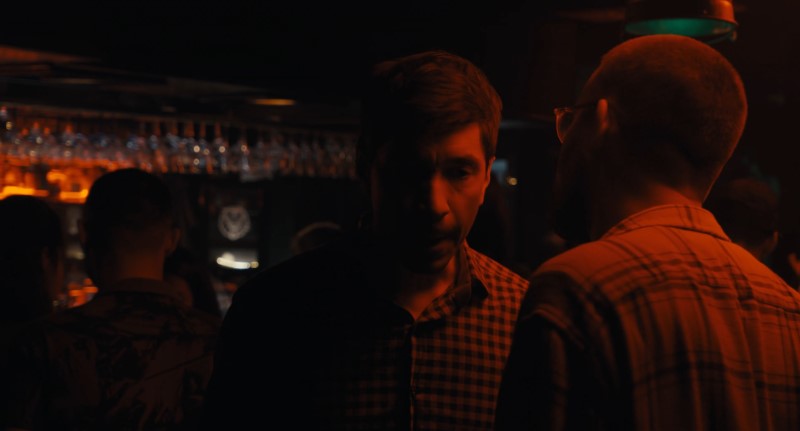
The bright red body of AJ’s LA convertible and the hellish glow of his brakelights in Brightmoor are as pronounced as the darkroom-red light over his face in the club when he excuses his sexual assault in the name of dogged persistence. The same kind of deep red light illuminates him in evil at the top of the water tower in the final act, moments before he tries to kill Tess to save himself (mere minutes after he accidentally shoots her). Both sequences also make a point of casting significantly more shadow on AJ than the others in the scenes, giving him a Beelzebub-esque characteristic that begs the question, “Was the title supposed to be plural?”
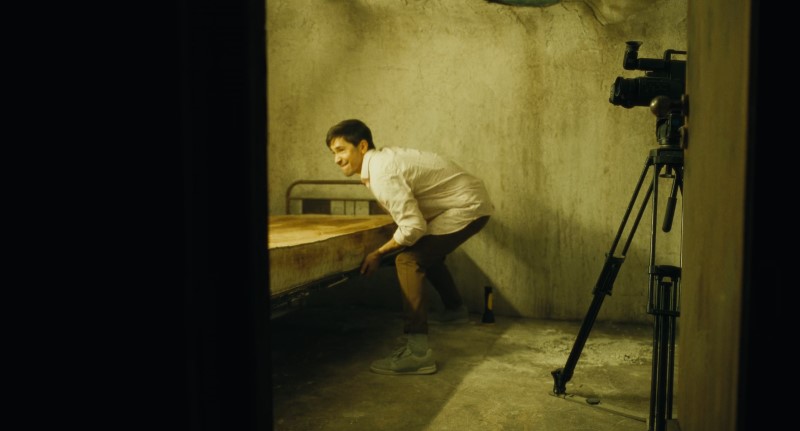
AJ doesn’t process aesthetics or feelings — just square footage. It doesn’t matter how sickly the vomit green of the torture dungeon is, how stained the bed is with remnant grime, how visible a bloody handprint is on the wall, how explicit the inhumane intentions of the room. If it can be listed as part of the total area, he could get a few extra bucks. And if he could get a few extra bucks, he might have a better shot at smearing Megan’s credibility before he loses both his career and community.
The jaundiced quality of the yellow, in concert with the radioactive fluorescence of the light, paints the frame as pure biohazard, as the blood left behind confirms. With the black tripod and camera, the scene is reminiscent of what Lena finds in the lighthouse in Annihilation. Where it colored the frame with a white-charcoal stracciatella to inspire a cosmic, otherworldly mood, Barbarian colors the frame here to inspire pure dread.
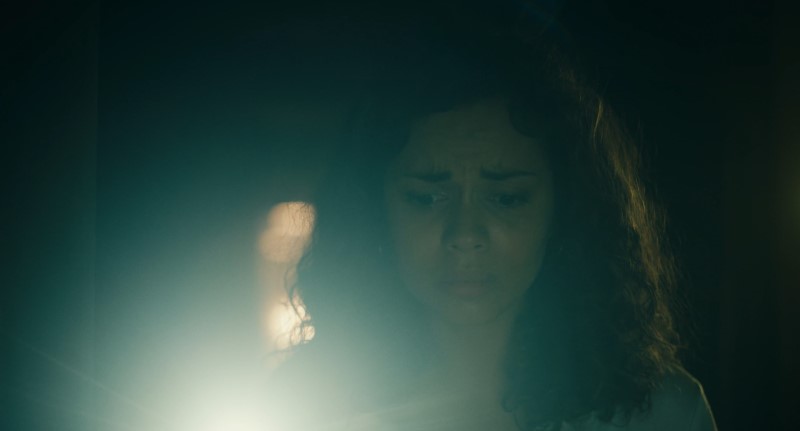
Here, through progressively cooling light, we can see the first few stops on the highway of horror that is the tunnel track. As we go deeper, the relative comfort of the warm golden shade of the basement in the back is traded for the nauseating cesspool sun of the bed-and-bucket torture room, then traded again for the ironically sterile surf green of the phone-light and wet slate gray of the bedrock tunnel walls.
The first subterranean stop on the Frank Express – the outer shell of the now comforting basement, with its built in lights and, more importantly, window to the outside world – is a warm, friendly candlelit color in the distance compared to the chilly inhumanity of the blinding white-green cell torch that confronts the camera, like Tess, with the reality of the situation (i.e. her first glimpse down the second staircase) and sets the monotone color palette for the tunnels when they’re lit by Tess’s phone.
The second stop, in between the two, can be found in the chartreuse light breathing down her neck on the right side. It was horrifying out of context originally, but the prospect of descending into darkness lends the very concept of the torture room’s fluorescence a twisted comfort, regardless of what the color is. Who in their right mind would choose unlit halls riddled with bloodsoaked human cages over any well-lit room?
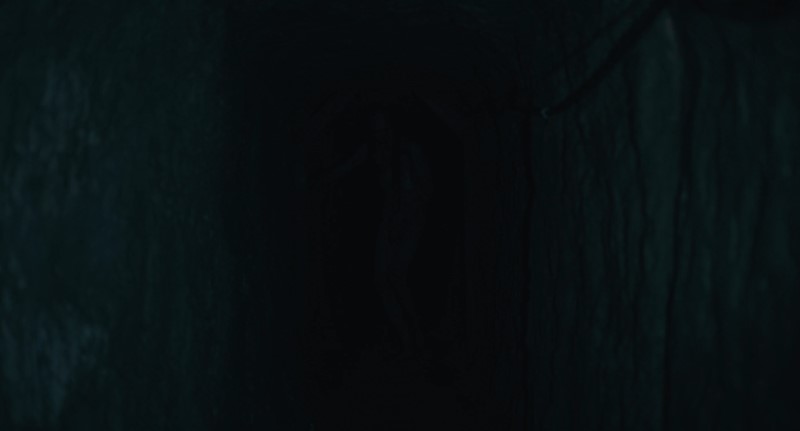
As she goes deeper, the light gets even colder and an ever-darkening palette grows more decayed in accent marks: the iron-amber rust of a gate swung wide open, the moldy black rot of a saddle-brown wooden buttress, the cage stain of blood bronzed over from years of idling after housing decades of unimaginable horrors. Darkness closes in around the edges of the frame incrementally.
When AJ finds Tess alive later in unfortunate circumstances, the color has disappeared and the light has neutraled out to a milky white that points to Feeding Time. We’re plunged into a cage of darkness – that screams, as if everything hadn’t already, “GET OUT” – where things are only as lit up as they are point blank to the flashlight. In the grown incest baby’s pitch dark prisoner pit, the darkness swallows everything but the center of their faces.
Post-nursery-escape, when AJ continues on with his phone, the dim white light leads us through the muddy, makeshift, stone-blue corridors to the barbarian’s chamber. As we approach the darkest, most depraved stop on the subway in the shot above – Frank’s room: the end of the line – even The Mother has her limits. In the center of the monochromatic slate darkness, she stops advancing on AJ, covers her nether regions, and slinks away into the shadows, more afraid of what harm the man behind the door is capable of than anything else in the tunnels. (A sign that The Mother is a little B barbarian to Frank’s nominal Barbarian).
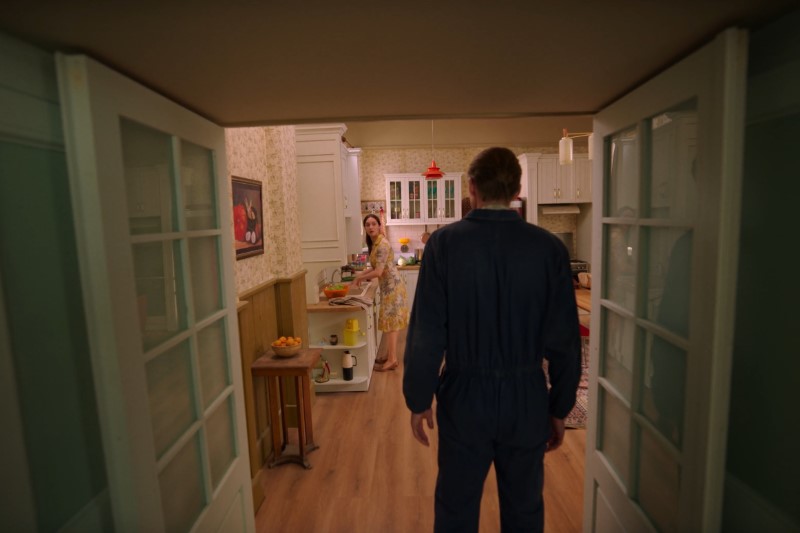
The living color of the Frank flashback is a pigmented lie supremely evident of Barbarian’s taste for illusion and misrepresentation by color. The shot Cregger jumpcuts to (see: header image) presents a technicolor dreamcoat of American Suburbia that tempts us to pit the modern muck of the neighborhood color against the clear-eyed electricity of its heyday. That is, until we realize we’re witnessing a serial rapist at work in broad daylight.
His victim’s pristine midcentury home is padded with a placid surf green, the mood and color of its generation, and littered with razor-sharp safety orange flags of danger in the jagged hanging light, lettuce container, still life on the wall, and basket of oranges in an otherwise pleasant white, lemon, and light wood kitchen. The unsuspecting woman wears a dress that matches the kitchen walls but leans more heavily into the lemon of it all. We’ll see the dress again, crumpled near a collection of torture tapes, when AJ finds Frank’s room in a navy shadow even darker than the shade of his faux-utility onesie here.
The drastically different palettes of Brightmoor then and now – in day and night – are day and night, but only in color. As the story unfolds, we learn that the house/neighborhood is a dangerous place no matter the year or time of day. If anything, it might be a tad safer in its dilapidated state than it was in its pique, when Frank was still on the prowl and the chipper, American dream facade spawned the illusion of goodness beneath the surface, luring women and children into his orbit.
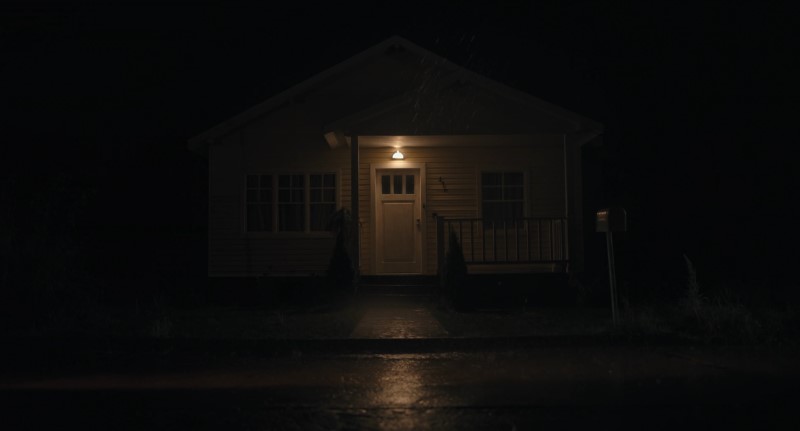
The women and children are almost never seen, nor is the violence committed against them, but both are occasionally heard. In the opening shot here, an eerie choir of ghouls ooh-ing and ah-ing fills the soundscape before it melts into a cacophony of shrill screams from the murdered that haunt Brightmoor in a perpetual state of unrest.
The further Tess goes in any direction, up or down, the worse off she is. Eventually, even the fire-lit historical safehouse on the street level (“I’ve been living in this place more than 15 years, and she ain’t never came in this motherfucker.”) is compromised, revealing the film’s big color twist: the warm nightlight hues throughout – which seemed ominous in the beginning, as they do here in the opening shot, but often ended up denoting trustworthy characters and places (e.g., Keith, the inside of the house) – was never the moniker of safety that it seemed, even in comparison to the cooler whites of daylight. Instead, the cozy color, littered across doorframes and layers at or above ground, was a sign that no person or place was safe from the barbarian or his monster.
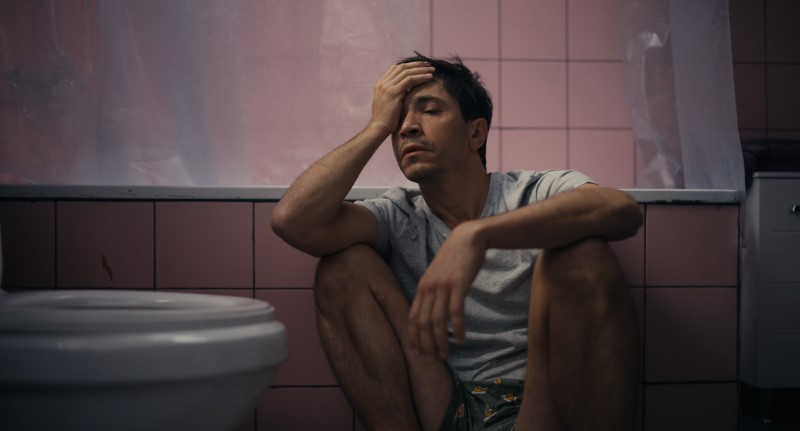
The only other color Barbarian persistently plays with is pink, the funniest color in the movie by far, which is saying a lot for a movie with a sense of humor as strong, self-effacing, and enriching as this one’s. It’s channeled here in the salmon tiles of the bathroom surrounding AJ, who, after dawning a pastel pink button down moments after this, will take to the tunnels for profit only to find himself surrounded by pink in a different room: the breastfeeding room. In tile and thread, the color hilariously precipitates his future place at the teat of The (poor) Mother in the fuchsia feeding room.
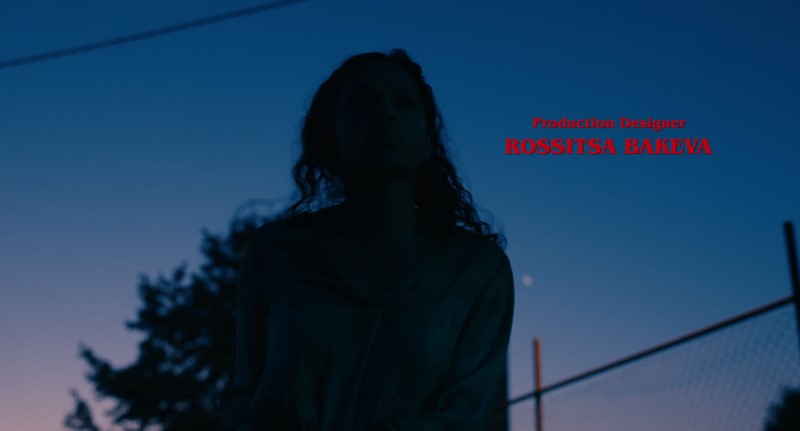
In the final frame, as Tess hobbles away in sweet escape, Barbarian finally takes the edge off, finding catharsis in its colors as much as its well-earned sigh of relief. No more swallowing darkness, no more hard, harsh hues, no more deceptively warm light (the last of which is cleverly situated behind her, her head taking it over in the frame as she takes the last steps before the credits roll). The lack of light casts a calming twilight tint over Tess that allows us to see the survivor’s look of grave relaxation on her face. The thematic complementary color scheme is left behind, and a simple analogous color scheme is employed in its place in the gradient of the sky that bleeds from pink to perrywinkle to pale picotee.
Luke Hicks is a New York City filmmaker, film journalist, and musician by way of Austin, TX. He earned his Master’s studying film philosophy, theology, and ethics at Duke University and is the founder of the Brooklyn-based Art Mob Productions.

